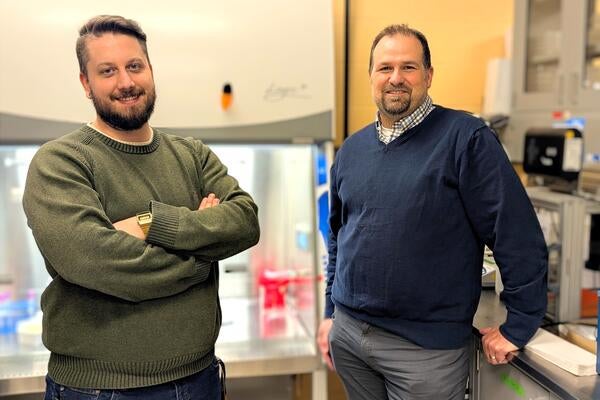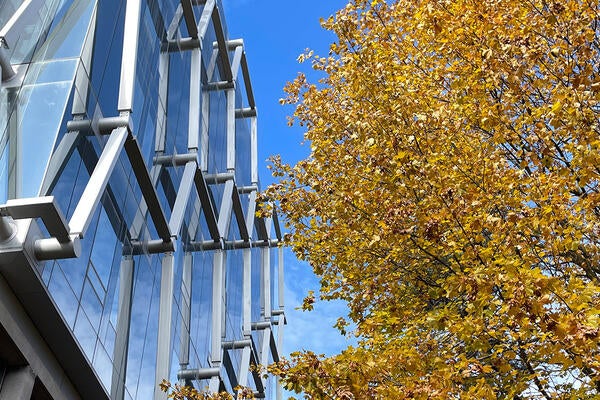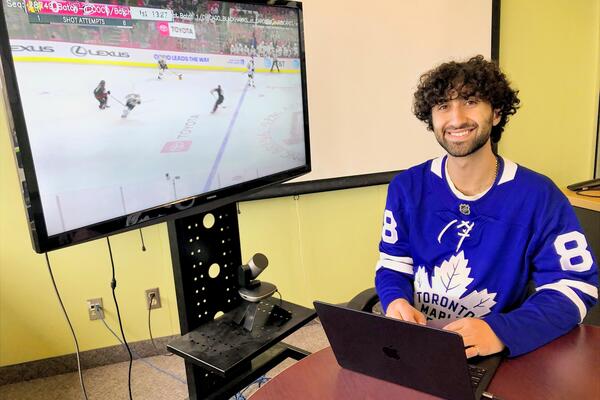
Breakthrough boosts security, efficiency of wireless communication
Groundbreaking two-way wireless technology developed by a University of Waterloo team will result in vastly superior voice and data services.

Groundbreaking two-way wireless technology developed by a University of Waterloo team will result in vastly superior voice and data services.
By Staff Communications & Public AffairsThe new technology, which enables wireless signals to be sent and received at the same time on a single radio channel frequency, was developed by a Waterloo research team led by Amir K. Khandani, Canada Research Chair in Wireless systems.
 "This means wireless companies can increase the bandwidth of voice and data services by at least a factor of two by sending and receiving at the same time, and potentially by a much higher factor through better adaptive transmission and user management in existing networks," says Khandani, a Waterloo electrical and computer engineering professor.
"This means wireless companies can increase the bandwidth of voice and data services by at least a factor of two by sending and receiving at the same time, and potentially by a much higher factor through better adaptive transmission and user management in existing networks," says Khandani, a Waterloo electrical and computer engineering professor.
Current wireless systems suffer from shortcomings similar to old walkie-talkies that don’t allow users to talk and listen on the same frequency at the same time. That's because the strength of the transmission overwhelms any incoming signal on the same frequency.
“Wireless is in desperate need of a breakthrough, and two-way comes at the right time," Khandani says. "The cost in hardware and signal processing complexities and antenna size is very low and virtually the same as current one-way systems. Two-way wireless systems will also have a profound impact on wireless networks in terms of quality of service and efficiency.”
The wireless advancement also opens the possibility to have ultra-secure transmission. “This can be done in ways that are much superior to current encryption techniques that are not truly secret, just hard to guess," said Khandani.
Khandani predicts two-way wireless will reshape the future of the wireless industry, which is under overwhelming pressure for higher data rates.
Further details about the two-way technology development and a short history of other contributions in this area are available as a video clip.

Read more
Engineering researchers team up to tackle the plastics pollution problem with microbial innovation and engineering design

Read more
15 University of Waterloo researchers have been named to the annual Highly Cited Researchers™ list for significant contributions to their specific fields of research

University of Waterloo Engineering master's student Liam Salass developed an AI-based system that improved puck detection when analyzing game video. (University of Waterloo)
Read more
University of Waterloo researchers make big strides in hockey analysis using game video
The University of Waterloo acknowledges that much of our work takes place on the traditional territory of the Neutral, Anishinaabeg, and Haudenosaunee peoples. Our main campus is situated on the Haldimand Tract, the land granted to the Six Nations that includes six miles on each side of the Grand River. Our active work toward reconciliation takes place across our campuses through research, learning, teaching, and community building, and is co-ordinated within the Office of Indigenous Relations.